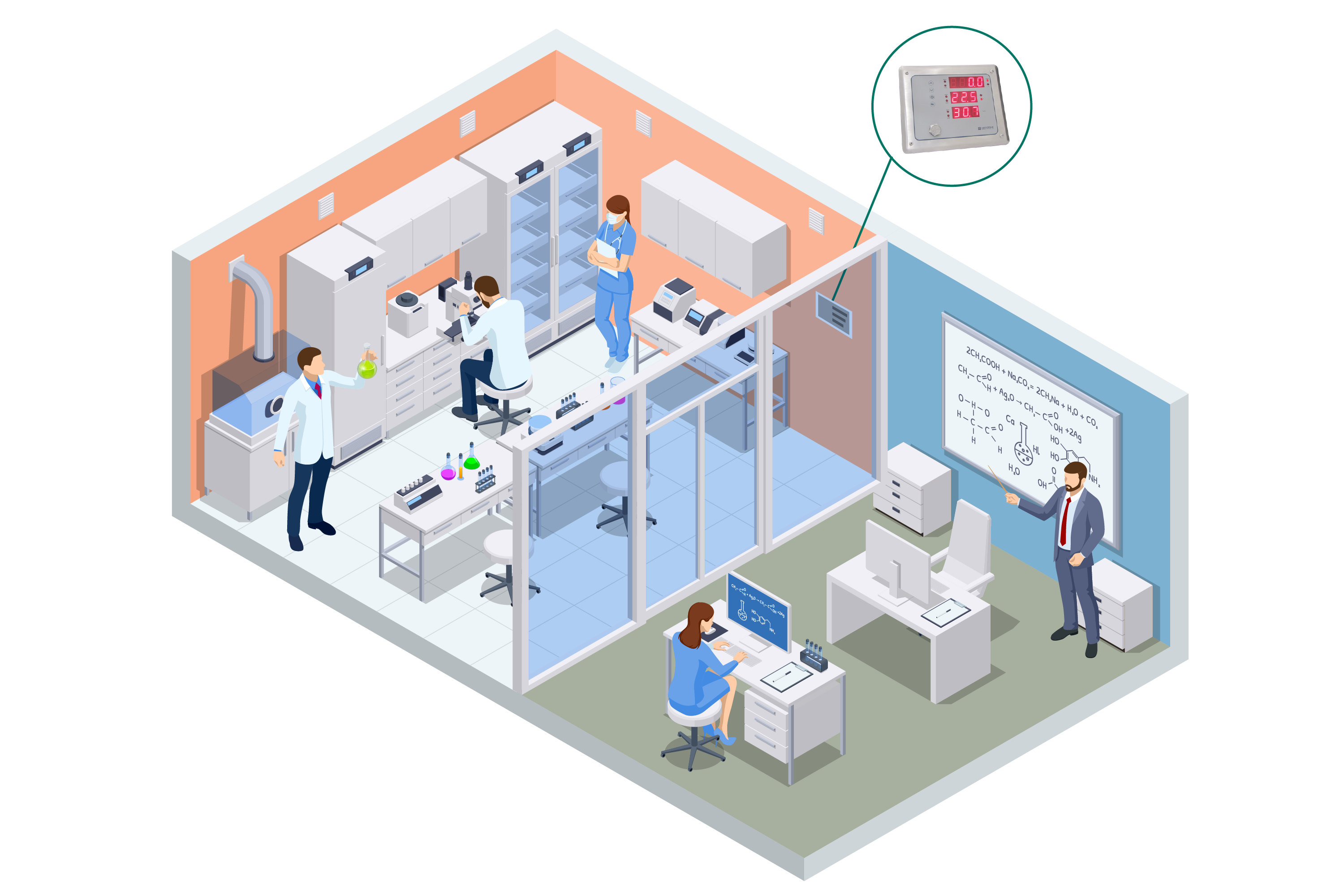Laboratory temperature and humidity monitoring is very important because the temperature and humidity in the laboratory may affect the results of experiments and the use of instruments.
Generally speaking, temperature and humidity monitoring in the laboratory mainly includes the following steps:
Select and develop an effective ambient temperature and humidity control range. Different laboratories have different requirements for temperature and humidity, and the appropriate temperature and humidity range should be determined according to the specific conditions of the laboratory.
Install a T/H sensor. Temperature and humidity sensors are installed at different locations in the laboratory to monitor the temperature and humidity in the laboratory in real time.
Check and maintain sensors regularly. Make sure the sensor is working properly and records temperature and humidity data. If the data is abnormal, take measures immediately.
Adjust the temperature and humidity according to the monitoring result. If the temperature and humidity in the laboratory deviates from the preset range, corresponding measures should be taken to adjust. For example, if the temperature is too high, you can turn on the air conditioner to cool. If the humidity is too high, start the dehumidifier.
Some laboratory temperature and humidity standards
1, reagent room: temperature 10 ~ 30℃, humidity 35 ~ 80%.
2, sample storage room: temperature 10 ~ 30℃, humidity 35 ~ 80%.
3, balance room: temperature 10 ~ 30℃, humidity 35 ~ 80%.
4, water room: temperature 10 ~ 30℃, humidity 35 ~ 65%.
5, infrared room: temperature 10 ~ 30℃, humidity 35 ~ 60%.
6, the base laboratory: temperature 10 ~ 30℃, humidity 35 ~ 80%.
7, sample room: temperature 10 ~ 25℃, humidity 35 ~ 70%.
8, microbiology laboratory: general temperature: 18-26 degrees, humidity: 45%-65%.
9, animal laboratory: humidity should be maintained between 40% and 60%RH.
10. Antibiotic laboratory: the cold place is 2 ~ 8℃, and the shade does not exceed 20℃.
11, concrete laboratory: the temperature should be stable at 20℃ soil 220℃, the relative humidity is not less than 50%.
The key links of laboratory temperature and humidity control mainly include the following points:
Define the type of laboratory and the content of the experiment: Different types and contents of the experiment have different requirements for temperature and humidity. For example, the temperature and humidity ranges that need to be controlled in biological laboratories and chemical laboratories are different, so the temperature and humidity control ranges need to be determined according to the type of laboratory and experimental content.
Choose the right instruments and reagents: the laboratory is placed a variety of instruments and reagents, these items have certain requirements for temperature and humidity. Therefore, it is necessary to select appropriate instruments and reagents according to the needs of the experiment, and carry out reasonable layout and use of them.
Formulate reasonable operating procedures: In order to ensure the stability of the laboratory environment and the accuracy of the experimental results, it is necessary to formulate reasonable operating procedures, including the preparation before the experiment, the operating steps during the experiment, the cleaning and maintenance after the experiment, etc., to ensure that each link meets the standard requirements.
Install a professional environmental monitoring system: In order to grasp the temperature and humidity of the laboratory environment in time, it is necessary to install a professional environmental monitoring system. The system can monitor the temperature and humidity data in the laboratory in real time, and can set the alarm value, once it exceeds the set range, it will issue an alarm and take corresponding measures to adjust.
Regular maintenance and maintenance: The temperature and humidity control of the laboratory not only requires strict monitoring at ordinary times, but also needs regular maintenance and maintenance. For example, regularly check the working status and performance of air conditioning systems, dehumidifiers and other equipment to ensure that they can operate normally; Clean the test bench and instrument surface regularly to prevent dust and dirt from affecting the test results.

Post time: May-23-2024





 Home
Home Products
Products Contact Us
Contact Us News
News